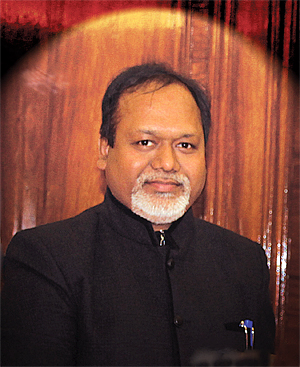INDIAN ARMED FORCES CHIEFS ON
OUR RELENTLESS AND FOCUSED PUBLISHING EFFORTS

SP Guide Publications puts forth a well compiled articulation of issues, pursuits and accomplishments of the Indian Army, over the years

I am confident that SP Guide Publications would continue to inform, inspire and influence.

My compliments to SP Guide Publications for informative and credible reportage on contemporary aerospace issues over the past six decades.
A Word from Editor-in-Chief
While the large order for [Airbus] aircraft indicates IndiGo’s plans for expansion, it is also a signal that the prospects of growth of the Indian airline industry are bright

On the civil aviation scenario, this issue carries an interview of Paulo Cesar Silva, President and CEO, Embraer Commercial Aviation, on the company’s ‘New Metrics of Success’ which essentially devolves around operating the right size of airliners to obtain the best returns on the assets deployed. Paulo Cesar Silva elaborates on the philosophy behind the development of the next-generation E2 Jets to succeed the E-Jets family of airliners.
But what is making waves in the Indian airline industry is the huge order for 250 Airbus A320neo airliners by the leading budget carrier IndiGo Airlines. While this large order indicates that IndiGo has grandiose plans for expansion, it is also a clear signal that the prospects of growth of the Indian airline industry are bright. R. Chandrakanth of SP’s Aviation has carried out a detailed analysis of the performance of Indian carriers and is of the view that with competition increasing and passengers becoming more demanding, performance of airlines will come under greater scrutiny. Chandrakanth also describes how global business aircraft manufacturers are increasing focus on the growing demand for special mission aircraft which is becoming a niche market. In another article, Chandrakanth looks at the leadership role that Virgin Atlantic is addressing the global challenge of climate change.
Ever since the tender for 126 Rafale combat jets from Dassault Aviation was formally cancelled, the Indian aerospace industry especially in the private sector has been anxiously looking forward to a final decision by the Government of India on the alternative course of action for the acquisition of fighter jets. The deal with the Government of France to procure 36 Rafale combat jets in a flyaway condition initiated during the visit of the Prime Minister of India to France in April this year will only provide partial relief to the Indian Air Force (IAF).
The IAF needs to acquire the balance of 90 combat jets urgently to arrest the alarming erosion in its operational capability. The gravity of the situation has been further accentuated by the failure on the part of the Indian aerospace major Hindustan Aeronautics Limited (HAL) to deliver the light combat aircraft Tejas Mk I in a combat ready state despite the lapse of over three decades since the commencement of the project. The performance of HAL has indeed been rather uninspiring and the possibility of this behemoth delivering 90 fighter jets to the IAF under the ‘Make in India’ scheme does not appear to be in the realm of possibility. Somewhat disappointed with the quality standards of their products, even Boeing has cancelled ongoing contracts with HAL for components. That should send a clear message to this mammoth defence public sector undertaking and the department of the Central Government in charge.
A high profile event on the international stage in which the IAF participated in the recent past was the fourth edition of Exercise Indradhanush, a joint air exercise with the Royal Air Force (RAF) of the United Kingdom held at Coningsby in Lincolnshire. While the IAF would certainly have imbibed useful lessons in the joint air exercise, the event was somewhat marred by some unwarranted comments in the Indian media by representatives of the IAF after the exercise was completed. One important lesson for the IAF to learn would be to avoid such embarrassment in joint air exercises with foreign air forces in the future. This issue of SP’s Aviation carries a report on Exercise Indradhanush.
An event of significance to the global aerospace industry in the recent past has been the grant of the long-delayed initial operational clearance for the F-35B, the Marine Corps version of the Lightening II Joint Strike Fighter. While this flags a major milestone in the development of what has been described as “the most expensive weapon platform so far”, the aircraft still has a long way to go before it is fully combat ready.
All these apart from the regular features in this issue of SP’s Aviation. Welcome aboard and happy landings!





